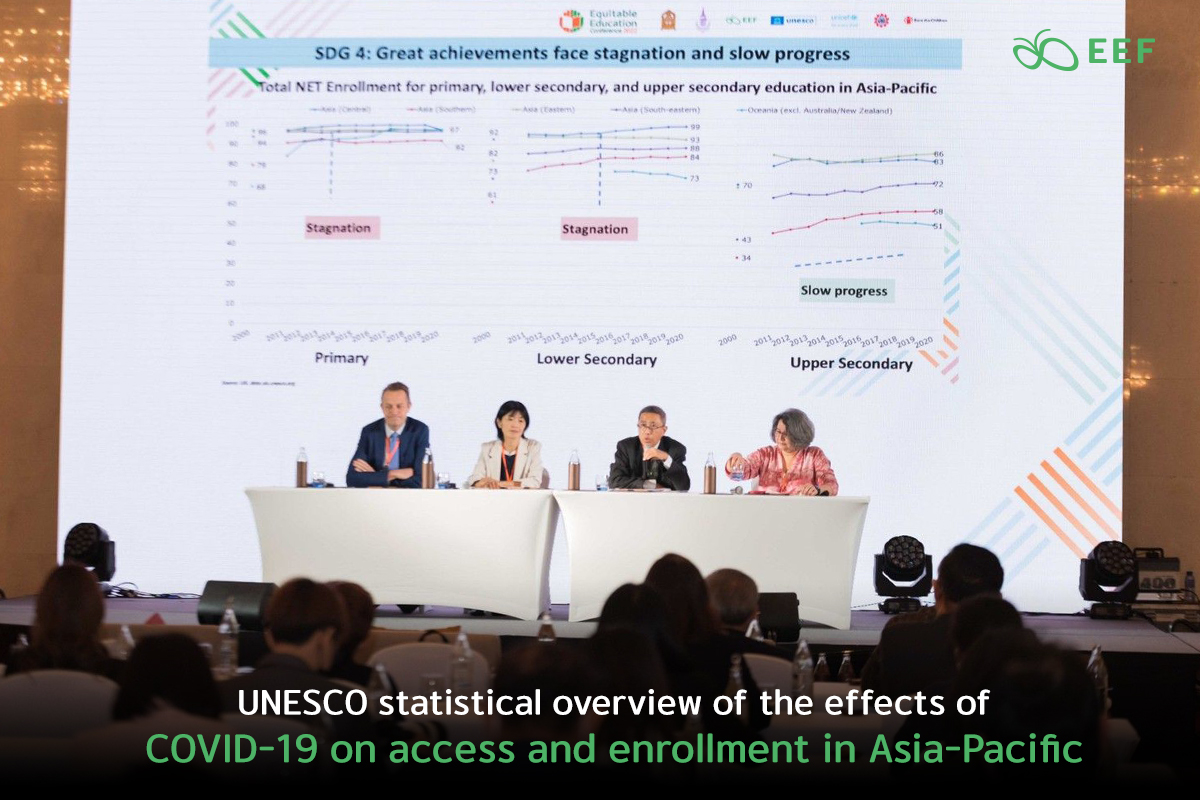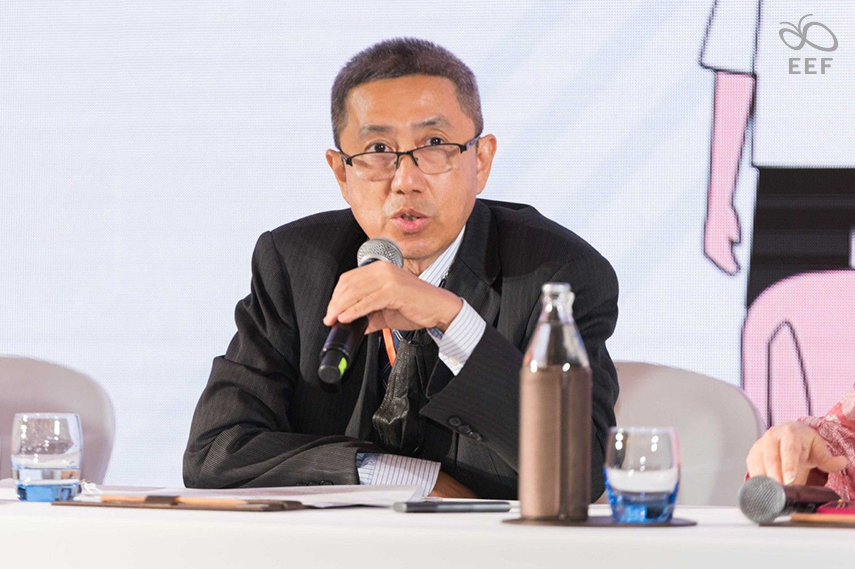
Mr. Nyi Nyi Thaung, UNESCO Bangkok Programme Specialist, started the session by stating that the net enrollment for primary school and lower secondary schools in Asia-Pacific had stagnated since 2014, and there was slow progress and struggle on the upper secondary level.

Mr. Nyi Nyi Thaung, Programme Specialist, UNESCO Bangkok
Mr. Thaung continued to elaborate on each SDG 4 target as follows
- SDG 4.1 Universal primary and secondary education
Though the participation rate is high, about 90% in the region, the progress has stagnated. It is a great challenge to make students complete the upper secondary level. Another significant concern is that more than 50% failed to meet minimum learning requirements in reading and mathematics. Although the region had been promising, the latest participation and completion show that it needs to be on track.
- SDG 4.2 Early childhood development and universal pre-primary education
The region has been performing well in early childhood development. Many countries have progressed with more children enrolled one year before the official entry age. Also, almost 80% of the early childhood in the region are on track. Mr. Thaung concluded that most countries are progressing towards SDG 4.2 promisingly.
- SDG 4.3 Equal access to technical/vocational and higher education
TVET has been neglected relatively in most countries despite the need for these skills to develop countries and their economies. At the tertiary level, the GER is high in developed countries. The number drops to 20-40% in developing countries.
- SDG 4.5 Gender equality and inclusion
The statistical data shows that girls have higher completion rates and less out-of-school at the upper secondary level. When considering location and wealth, the youth from rural areas and/or poor socio-economic backgrounds tend to have less completion rate and more out-of-school. Children with disabilities and ethnicity have the most disadvantages on this issue.
Furthermore, Mr. Thaung focussed on how COVID-19 disrupted education. During the pandemic, more than 800 million students have been disrupted due to school closures – 400 million in South Asia, 260 million in East Asia, and 140 million in Southeast Asia. Moreover, more than 27 million students waited more than a year to return to school and 43 million teachers have been affected.

In response to COVID-19, Mr. Thaung questioned whether remote learning is systematically delivered, sufficiently available, and feasible. Teachers are also facing difficulties adapting to new ways of teaching when there are many new learning deliveries such as online, television, radio broadcasting, social media, and web-based platforms.

Moreover, there are significant impacts on education during COVID-19. Almost 7 million are at risk of dropping out of school. There were also great learning losses between 2019-2020 – reading proficiency declined 10% globally. More than 80% of low-income countries face moderate to severe data disruption on the information gap.
To conclude, Mr. Thaung encouraged the forum to go further in detail to address the problem of whether there are learning losses and leftover children. The learning loss and many education problems had existed before the pandemic and were magnified after that. The common goal is to create a better policy to tackle these challenges with gathered data and insights.
Source
International Conference on Equitable Education: Together Towards Equity 2022
Session 1: Statistical Overview: Access & Enrollment By Mr. Nyi Nyi Thaung, Programme Specialist, UNESCO Bangkok

